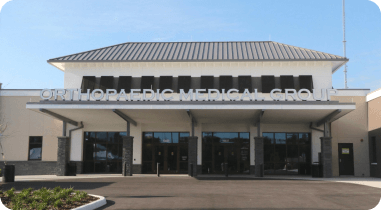
Considering the different types of shoulder injuries one can sustain, rotator cuff injuries are among the most common in Florida. It often comes with the popularity of active sports and sometimes the daily routines of physical laborers. One of the top treatment methods recommended by many orthopaedic specialists is customized physical therapy. This guide will go over what to expect from physical therapy when treating rotator cuff injuries at Orthopaedic Medical Group of Tampa Bay.
What is a Rotator Cuff Injury?
The rotator cuff is a group of four muscles and tendons that stabilize the shoulder joint and enable smooth movement. Injuries can range from mild inflammation (tendinitis) to partial or full-thickness tears. Common symptoms include pain at rest or during activity, weakness in the shoulder, and limited range of motion. Early intervention is critical to prevent further damage and improve long-term outcomes.
Learn more > What Does A Rotator Cuff Tear Feel Like? 6 Warning Signs
The Role of Physical Therapy
Physical therapy plays a central role in treating rotator cuff injuries, whether the patient has had surgery or is managing a non-surgical injury. The primary goals of therapy include reducing pain, restoring shoulder mobility, strengthening the surrounding muscles, and preventing future injuries. A skilled physical therapist designs a personalized program based on the type and severity of the injury, the patient’s lifestyle, and recovery goals.
Initial Evaluation and Pain Management
During the first session, the physical therapist will conduct a thorough assessment, including a review of medical history, a physical exam, and possibly imaging results. This evaluation helps identify the specific structures involved and the best approach to treatment. Early therapy often focuses on pain relief and gentle range-of-motion exercises. Techniques may include manual therapy, ice or heat application, ultrasound, or electrical stimulation.
Progressive Exercises for Recovery
As pain decreases, therapy typically progresses to more active exercises that improve flexibility and strengthen the rotator cuff and surrounding muscles. Stretching exercises help maintain shoulder mobility, while resistance training and functional exercises target strength and stability. Patients may also learn proper posture and movement techniques to reduce stress on the shoulder during daily activities.
Timeline and Expectations
Recovery timelines vary depending on the injury’s severity and whether surgery was performed. Mild rotator cuff injuries may improve within a few weeks, while post-surgical recovery can take several months. Consistency with therapy, adherence to home exercises, and open communication with the therapist are key factors for success. Patients can expect gradual improvements in strength and range of motion, leading to restored function and reduced pain over time.
Preventing Future Injuries
Physical therapy also focuses on preventing future rotator cuff injuries. This may include education on proper lifting techniques, ergonomic adjustments, and a maintenance exercise program. Long-term commitment to shoulder health can reduce the risk of recurring injuries and improve overall quality of life.
Meet With a Physical Therapist For Rotator Cuff Injuries at Orthopaedic Medical Group of Tampa Bay
Schedule a consultation appointment with Orthopaedic Medical Group of Tampa Bay for effective rotator cuff treatment near you. We will create a customized physical therapy plan for your shoulder injury to encourage optimal results. Call (813) 684-BONE (2663) today.




